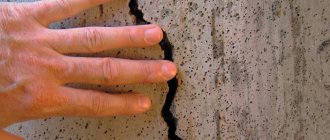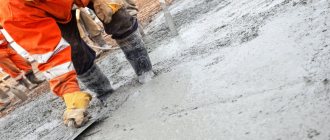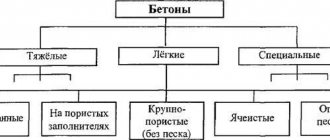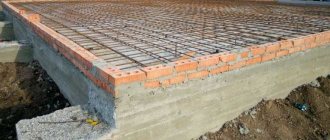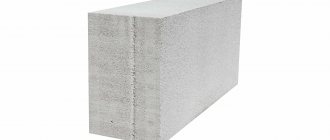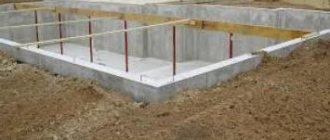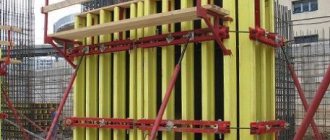Preface
1 DEVELOPED by the State Central Research and Design Institute for Complex Problems of Building Structures and Structures named after V.A. Kucherenko (TsNIISK named after V.A. Kucherenko), Research, Design and Technological Institute of Concrete and Reinforced Concrete ( NIIZHB), with the participation of JSC “Experimental Plant of Dry Mixes” and JSC “Rosconitstroy” of the Russian Federation
INTRODUCED by the State Construction Committee of Russia
2 ADOPTED by the Interstate Scientific and Technical Commission for Standardization, Technical Regulation and Certification in Construction (MNTKS) on November 12, 1998.
Voted for acceptance
| State name | Name of the state construction management body |
| Republic of Armenia | Ministry of Urban Development of the Republic of Armenia |
| The Republic of Kazakhstan | Committee on Housing and Construction Policy under the Ministry of Energy, Industry and Trade of the Republic of Kazakhstan |
| Republic of Kyrgyzstan | State Inspectorate for Architecture and Construction under the Government of the Kyrgyz Republic |
| The Republic of Moldova | Ministry of Territorial Development, Construction and Communal Services of the Republic of Moldova |
| Russian Federation | Gosstroy of Russia |
| The Republic of Tajikistan | State Construction Committee of the Republic of Tajikistan |
| The Republic of Uzbekistan | State Committee for Architecture and Construction of the Republic of Uzbekistan |
3 INSTEAD GOST 28013-89
4 ENTERED INTO EFFECT on July 1, 1999 as a state standard of the Russian Federation by Decree of the State Construction Committee of Russia dated November 29, 1998 N 30
5 EDITION (July 2020), with Amendment No. 1 (IUS 11-2002)
Information about changes to this standard is published in the annual information index “National Standards”, and the text of changes and amendments is published in the monthly information index “National Standards”. In case of revision (replacement) or cancellation of this standard, the corresponding notice will be published in the monthly information index “National Standards”. Relevant information, notices and texts are also posted in the public information system - on the official website of the Federal Agency for Technical Regulation and Metrology on the Internet (www.gost.ru)
News
Preface 1 Developed by the State Central Research and Design Institute of Complex Problems of Building Structures and Structures named after. V.A. Kucherenko (TsNIISK named after V.A. Kucherenko), Research, Design and Technological Institute of Concrete and Reinforced Concrete (NIIZhB), with the participation of JSC "Pilot Plant of Dry Mixes" and JSC "Roskonitstroy" of the Russian Federation Introduced by the State Construction Committee of Russia 2 Accepted Interstate Scientific and Technical Commission for Standardization, Technical Regulation and Certification in Construction (MNTKS) November 12, 1998 Voted for adoption
| State name | Name of the state construction management body |
| Republic of Armenia | Ministry of Urban Development of the Republic of Armenia |
| The Republic of Kazakhstan | Committee on Housing and Construction Policy under the Ministry of Energy, Industry and Trade of the Republic of Kazakhstan |
| Republic of Kyrgyzstan | State Inspectorate for Architecture and Construction under the Government of the Kyrgyz Republic |
| The Republic of Moldova | Ministry of Territorial Development, Construction and Communal Services of the Republic of Moldova |
| Russian Federation | Gosstroy of Russia |
| The Republic of Tajikistan | State Construction Committee of the Republic of Tajikistan |
| The Republic of Uzbekistan | State Committee for Architecture and Construction of the Republic of Uzbekistan |
3 Instead of GOST 28013-89 4 Entered into force on July 1, 1999 as a state standard of the Russian Federation by Decree of the Gosstroy of Russia dated December 29, 1998 No. 30 Amendment No. 1 was introduced, approved by Decree of the Gosstroy of Russia No. 23 dated 05/07/2002. 1 Scope of application This standard applies to mortars with mineral binders used for masonry and installation of building structures during the construction of buildings and structures, fastening cladding products, and plaster. The standard does not apply to special solutions (heat-resistant, chemical-resistant, fire-resistant, heat- and waterproofing, grouting, decorative, tensile, etc.). The requirements set out in 4.3 4.13, 4.14.2 4.14.14, sections 57, appendices B and D of this standard are mandatory. 2 Regulatory references The regulatory documents used in this standard are given in Appendix A. 3 Classification 3.1 Construction mortars are classified according to: - main purpose; - the binder used; - medium density. 3.1.1 Based on their main purpose, mortars are divided into: - masonry mortars (including for installation work); - facing; - plastering. 3.1.2 According to the binders used, solutions are divided into: - simple (using one type of binder); - complex (on mixed binders). 3.1.3 Based on average density, solutions are divided into: - heavy; - lungs. 3.2 The designation of a mortar when ordering must consist of an abbreviated designation indicating the degree of readiness (for dry mortar mixtures), purpose, type of binder used, grades for strength and mobility, average density (for light mortars) and the designation of this standard. An example of a symbol for a heavy mortar, ready to use, masonry, on lime-gypsum binder, strength grade M100, mobility grade Pk2: Masonry mortar, lime-gypsum, M100, Pk2, GOST 28013-98. For a dry mortar mixture, light, plaster, on a cement binder, grade M50 for strength and mobility Pk3, medium density D900: Dry mortar plaster mixture, cement, M50, Pk3, D900, GOST 28013-98. 4 General technical requirements 4.1 Construction mortars are prepared in accordance with the requirements of this standard according to the technological regulations approved by the manufacturer. 4.2 Mortar properties include the properties of mortar mixtures and hardened mortar. 4.2.1 Basic properties of mortar mixtures: - mobility; — water-holding capacity; — delamination; — application temperature; — average density; — humidity (for dry mortar mixtures). 4.2.2 Basic properties of the hardened mortar: - compressive strength; — frost resistance; - average density. If necessary, additional indicators can be established in accordance with GOST 4.233. 4.3 Depending on the mobility, mortar mixtures are divided in accordance with Table 1. Table 1
| PC mobility brand | Norm of mobility for cone immersion, cm |
| PC1 | From 1 to 4 incl. |
| PC2 | St. 4 "8" |
| PC3 | » 8 » 12 » |
| PC4 | » 12 »14 » |
The recommended mobility of the mortar mixture at the site of use, depending on the purpose of the solution, is given in Appendix B. 4.4 The water-holding capacity of mortar mixtures must be at least 90%, for clay-containing solutions at least 93%. 4.5 The stratification properties of freshly prepared mixtures should not exceed 10%. 4.6 The mortar mixture should not contain fly ash more than 20% of the cement mass. 4.7 The temperature of mortar mixtures at the time of use should be: a) masonry mortars for external work in accordance with the instructions in Table 2; b) facing mortars for cladding with glazed tiles at a minimum outside temperature, °C, not less than: 5 and above……………………………………………………………………………………… ….. 15; c) plaster mortars at a minimum outside temperature, °C, not less: from 0 to 5………………………………………………………………………………………. 15 from 5 and above……………………………………………………………………………….. 10. Table 2
| Average daily | Temperature of the mortar mixture, °C, not less | |||
| outside temperature | Masonry material | |||
| air, °C | brick | stones | ||
| at wind speed, m/s | ||||
| until 6 | St. 6 | until 6 | St. 6 | |
| Up to minus 10 | 10 | 10 | 10 | 15 |
| From minus 10 to minus 20 | 10 | 15 | 15 | 20 |
| Below minus 20 | 15 | 20 | 20 | 25 |
| Note: For masonry mortar mixtures during installation work, the temperature of the mixture should be 10 °C higher than indicated in the table | ||||
4.8 The moisture content of dry mortar mixtures should not exceed 0.1% by weight. 4.9 The standardized quality indicators of the hardened mortar must be ensured at the design age. The design age of the solution, unless otherwise specified in the design documentation, should be taken as 28 days. for solutions on all types of binders, except gypsum and gypsum-containing ones. The design age of solutions based on gypsum and gypsum-containing binders is 7 days. (Changed edition, Amendment No. 1) 4.10 The compressive strength of mortars at design age is characterized by the following grades: M4, M10, M25, M50, M75, M100, M150, M200. The compressive strength grade is assigned and controlled for all types of mortars. 4.11 The frost resistance of solutions is characterized by grades. The following frost resistance grades are established for the solutions: F10, F15, F25, F35, F50, F75, F100, F150, F200. For mortars of compressive strength grades M4 and M10, as well as for mortars prepared without the use of hydraulic binders, frost resistance grades are not assigned or controlled. 4.12 The average density, D, of hardened mortars at design age should be, kg/m³: - heavy mortars…………………………………………………………… 1500 or more - light mortars……………… ……………………………….. less than 1500. The normalized value of the average density of solutions is set by the consumer in accordance with the work project. 4.13 Deviation of the average density of the solution towards an increase is allowed no more than 10% of that established by the design. 4.14 Requirements for materials for the preparation of mortars 4.14.1 Materials used for the preparation of mortars must comply with the requirements of standards or technical specifications for these materials, as well as the requirements of this standard. 4.14.2 The following should be used as binding materials: - gypsum binders in accordance with GOST 125; — building lime according to GOST 9179; — Portland cement and Portland slag cement according to GOST 10178; — pozzolanic and sulfate-resistant cements according to GOST 22266; — cements for mortars in accordance with GOST 25328; — clay according to Appendix B; - others, including mixed binders, according to regulatory documents for a specific type of binder. 4.14.3 Cementing materials for preparing solutions should be selected depending on their purpose, type of structures and conditions of their operation. 4.14.4 Cement consumption per 1 m³ of sand in mortars based on cement and cement-containing binders must be at least 100 kg, and for masonry mortars, depending on the type of structure and their operating conditions, not less than that given in Appendix D. 4.14.5 Alkali content in cement binders intended for the preparation of plaster and facing mortars should not exceed 0.6% by weight. 4.14.6 Lime binder is used in the form of hydrated lime (fluff), lime dough, and milk of lime. Lime milk must have a density of at least 1200 kg/m³ and contain at least 30% lime by weight. Lime binder for plastering and facing mortars should not contain unslaked lime particles. The lime dough must have a temperature of at least 5 °C. 4.14.7 The following should be used as a filler: - sand for construction work in accordance with GOST 8736; — fly ash according to GOST 25818; — ash and slag sand according to GOST 25592; — porous sands according to GOST 25820; — sand from slags of thermal power plants according to GOST 26644; - sand from ferrous and non-ferrous metallurgy slags for concrete according to GOST 5578. 4.14.8 The largest grain size of the aggregate should be, mm, no more than: - masonry (except rubble masonry) …………………………………… ….2.5 – rubble masonry………………………………………………………………………………… 5.00 – plaster (except for the covering layer) ………………………… …..2.5 - plaster covering layer……………………………………………………….. 1.25 — facing………………………………………………………… ………… 1.25 The content of sand grains larger than 2.5 mm for plaster mortars and more than 1.25 mm for facing and plaster covering mortars is not allowed. (Changed edition, Amendment No. 1) 4.14.9 When heating aggregates, their temperature, depending on the binder used, should not be higher, °C, when using: - cement binder…………………………………… ……………………………………………………….. 60 - cement-lime, cement-clay and clay binders …………………………40 - lime, clay-lime , gypsum and lime-gypsum binder…………20. 4.14.10 The content of harmful impurities in aggregates should not exceed the requirements of GOST 26633 for fine aggregates. 4.14.11 The specific effective activity of natural radionuclides Aeff of materials used for the preparation of mortar mixtures must not exceed the limit values depending on the area of application of the mortar mixtures in accordance with GOST 30108. 4.14.12 Chemical additives must comply with the requirements of GOST 24211. Additives are introduced into mortar mixtures, ready for use, in the form of aqueous solutions or aqueous suspensions, in dry mortar mixtures in the form of water-soluble powder or granules. 4.14.13 Water for mixing mortar mixtures and preparing additives is used in accordance with GOST 23732. 4.14.14 Bulk starting materials for mortar mixtures are dosed by weight, liquid components are dosed by weight or volume. The dosing error should not exceed ± 1% for binders, water and additives, and ± 2% for fillers. For mortar mixing plants with a capacity of up to 5 m³/h, volumetric dosing of all materials is allowed with the same errors. 4.15 Marking, packaging 4.15.1 Dry mortar mixtures are packaged in plastic film bags in accordance with GOST 10354 weighing up to 8 kg or paper bags in accordance with GOST 2226 weighing up to 50 kg. 4.15.2 Packaged dry mortar mixtures should be labeled on each package. The markings must be clearly marked on the packaging with indelible paint. 4.15.3 Mortar mixtures must have a quality document. The manufacturer must accompany the dry mortar mixture with a label or marking applied to the packaging, and the ready-to-use mortar mixture dispensed into the vehicle with a quality document, which must contain the following data: - name or trademark and address of the manufacturer; — symbol of mortar according to 3.2; - class of materials used to prepare the mixture, according to the specific effective activity of natural radionuclides and the digital value of Aeff; — grade for compressive strength; — mobility grade (Pk); — volume of water required to prepare the mortar mixture, l/kg (for dry mortar mixtures); — type and amount of added additive (% of the binder mass); — shelf life (for dry mortar mixtures), months; — weight (for dry mortar mixtures), kg; — amount of mixture (for ready-to-use mortar mixtures), m³; — date of preparation; — application temperature, °C; — designation of this standard. If necessary, the labeling and quality document may contain additional data. The quality document must be signed by the manufacturer’s official responsible for technical control. 5 Acceptance rules 5.1 Mortar mixtures must be accepted by the manufacturer’s technical control. 5.2 Mortar mixtures and solutions are accepted in batches through acceptance and periodic control. A batch of mortar mixture and mortar is taken to be the quantity of a mixture of the same nominal composition with the same quality of its constituent materials, prepared using a single technology. The batch volume is established by agreement with the consumer, not less than the output of one shift, but not more than the daily output of the mortar mixer. 5.3 All mortar mixtures and solutions are subject to acceptance control according to all standardized quality indicators. 5.4 When accepting each batch, at least five spot samples are taken from the mortar mixture. 5.4.1 Spot samples are taken at the place of preparation of the mortar mixture and/or at the place of its use from several batches or places in the container into which the mixture is loaded. Sampling points from the tank should be located at different depths. With a continuous supply of the solution mixture, spot samples are taken at irregular intervals for 510 minutes. 5.4.2 After selection, spot samples are combined into a total sample, the mass of which must be sufficient to determine all controlled quality indicators of mortar mixtures and solutions. The selected sample is thoroughly mixed before testing (with the exception of mixtures containing air-entraining additives). Mortar mixtures containing air-entraining, foaming and gas-forming additives are not additionally mixed before testing. 5.4.3 Testing of the mortar mixture, ready for use, should begin during the period when the normalized mobility is maintained. 5.5 The mobility and average density of the mortar mixture in each batch is monitored at least once per shift by the manufacturer after unloading the mixture from the mixer. The humidity of dry mortar mixtures is controlled in each batch. The strength of the solution is determined in each batch of the mixture. Standardized technological indicators of the quality of mortar mixtures provided for in the supply contract (average density, temperature, delamination, water-holding capacity) and frost resistance of the solution are monitored within a time frame agreed with the consumer, but at least once every 6 months, as well as when the quality of the initial ones changes materials, composition of the solution and technology for its preparation. 5.6 Radiation-hygienic assessment of materials used for the preparation of mortar mixtures is carried out according to quality documents issued by enterprises that supply these materials. In the absence of data on the content of natural radionuclides, the manufacturer, once a year, and also at each change of supplier, determines the specific effective activity of natural radionuclides Aeff of materials in accordance with GOST 30108. 5.7 Solution mixtures, ready for use, are dispensed and accepted by volume. The volume of the mortar mixture is determined by the output of the mortar mixer or by the volume of the transport or measuring container. Dry mortar mixtures are released and taken by weight. 5.8 If, when checking the quality of the mortar, a non-compliance with at least one of the technical requirements of the standard is revealed, this batch of mortar is rejected. 5.9 The consumer has the right to carry out a control check of the quantity and quality of the mortar mixture in accordance with the requirements of this standard according to the methods of GOST 5802. 5.10 The manufacturer is obliged to inform the consumer, upon his request, the results of control tests no later than 3 days after their completion, and in case of failure to confirm the standardized indicator, inform the consumer about this immediately. 6 Control methods 6.1 Samples of mortar mixtures are taken in accordance with the requirements of 5.4, 5.4.1 and 5.4.2. 6.2 Materials for preparing mortar mixtures are tested in accordance with the requirements of standards and technical specifications for these materials. 6.3 The quality of chemical additives is determined by the effectiveness of their action on the properties of mortars in accordance with GOST 30459. 6.4 The concentration of the working solution of additives is determined with a hydrometer in accordance with GOST 18481 in accordance with the requirements of standards and technical specifications for specific types of additives. 6.5 The specific effective activity of natural radionuclides Aeff in materials for the preparation of mortar mixtures is determined according to GOST 30108. 6.6 The mobility, average density, water-holding capacity and stratification of mortar mixtures are determined according to GOST 5802. 6.7 The volume of entrained air in mortar mixtures is determined according to GOST 10181. (Modified edition, Amendment No. 1) 6.8 The temperature of freshly prepared mortar mixtures is measured with a thermometer, immersing it in the mixture to a depth of at least 5 cm. 6.9 Compressive strength, frost resistance and average density of hardened mortars are determined according to GOST 5802. 6.10 The moisture content of dry mortar mixtures is determined according to GOST 8735. 7 Transportation and storage 7.1 Transportation 7.1.1 Mortar mixtures, ready for use, should be delivered to the consumer in vehicles specifically designed for their transportation. With the consent of the consumer, transportation of mixtures in bunkers (tubs) is allowed. 7.1.2 The methods used for transporting mortar mixtures must exclude the loss of binder dough, the ingress of atmospheric precipitation and foreign impurities into the mixture. 7.1.3 Packaged dry mortar mixtures are transported by road, rail and other modes of transport in accordance with the rules for the transportation and securing of goods in force for this type of transport. 7.2 Storage 7.2.1 Mortar mixtures delivered to the construction site, ready for use, must be reloaded into mixer loaders or other containers, provided that the specified properties of the mixtures are maintained. 7.2.2 Packaged dry mortar mixtures are stored in covered, dry rooms. Bags of dry mixture must be stored at a temperature not lower than 5°C under conditions that ensure the safety of the packaging and protection from moisture. 7.2.3 The shelf life of the dry mortar mixture is 6 months from the date of preparation. At the end of the storage period, the mixture must be checked for compliance with the requirements of this standard. If compliant, the mixture can be used for its intended purpose. List of regulatory documents GOST 4.23386 SPKP. Construction. Construction solutions. Nomenclature of indicators GOST 12579 Gypsum binders. Technical specifications GOST 222688 Paper bags. Technical specifications GOST 2642.597 Refractories and refractory raw materials. Methods for determining iron oxide GOST 2642.1197 Refractories and refractory raw materials. Methods for determination of potassium and sodium oxides GOST 3594.477 Molding clays. Methods for determining sulfur content GOST 557894 Crushed stone and sand from ferrous and non-ferrous metallurgy slags for concrete. Technical specifications GOST 580286 Construction mortars. Test methods GOST 873588 Sand for construction work. Test methods GOST 873693 Sand for construction work. Technical specifications GOST 917977 Construction lime. Technical specifications GOST 1017885 Portland cement and Portland slag cement. Technical specifications GOST 101812000 Concrete mixtures. Test methods GOST 1035482 Polyethylene film. Technical specifications GOST 1848181 Glass hydrometers and cylinders. Technical specifications GOST 21216.293 Clay raw materials. Method for determining fine fractions GOST 21216.1293 Clay raw materials. Method for determining residue on a sieve with mesh No. 0063 GOST 2226694 Sulfate-resistant cements. Technical specifications GOST 2373279 Water for concrete and mortars. Technical specifications GOST 2421191 Additives for concrete. General technical requirements GOST 2532882 Cement for mortars. Technical specifications GOST 2559291 Ash and slag mixtures from thermal power plants for concrete. Technical specifications GOST 2581891 Fly ash from thermal power plants for concrete. Technical specifications GOST 258202000 Lightweight concrete. Technical specifications GOST 2663391 Heavy and fine-grained concrete. Technical specifications GOST 2664485 Crushed stone and sand from thermal power plant slags for concrete. Technical specifications GOST 3010894 Construction materials and products. Determination of specific effective activity of natural radionuclides GOST 3045996 Additives for concrete. Methods for determining the effectiveness of SNiP II-3-79* Construction heating engineering (Changed edition, Amendment No. 1) Mobility of the mortar mixture at the site of application depending on the purpose of the solution Table B.1
| Main purpose of the solution | Cone immersion depth, cm | PC mobility brand |
| A Masonry: | ||
| — for rubble masonry: | ||
| vibrated | 1-3 | PC1 |
| unvibrated | 4-6 | PC2 |
| - for masonry made of hollow bricks | 7-8 | PC2 |
| or ceramic stones | ||
| - for masonry made of solid bricks; ceramic | 8-12 | PC3 |
| stones; concrete stones or light rock stones | ||
| - for filling voids in masonry and supplying with a mortar pump | 13- 14 | PC4 |
| - for making a bed when installing walls made of large | 5-7 | PC2 |
| concrete blocks and panels; horizontal joints | ||
| and vertical joints in walls made of panels and large | ||
| concrete blocks | ||
| B Facing: | ||
| - for fastening slabs of natural stone and | 6-8 | PC2 |
| ceramic tiles on a finished brick wall | ||
| — for fastening lightweight concrete cladding products | ||
| panels and blocks in the factory | ||
| In Plastering: | ||
| soil solution | 7-8 | PC2 |
| spray solution: | ||
| with manual application | 8-12 | PC3 |
| with a mechanized application method | 9-14 | PC4 |
| coating solution: | ||
| without the use of gypsum | 7-8 | PC2 |
| using gypsum | 9-12 | PC3 |
Clay for mortars. Technical requirements These technical requirements apply to clay intended for the preparation of mortars. B. 1. Technical requirements for clay B.1.1 The content of clay particles less than 0.4 mm in size must be no less than 30 and no more than 80%. B.1.2 The content of sand particles larger than 0.16 mm should be no more than 30%. B.1.3 The content of chemical components by weight of dry clay should not be more than %: - sulfates and sulfides in terms of SO3 1; — sulfide sulfur in terms of SO3 0.3; - mica 3; — soluble salts (causing efflorescence and efflorescence): sum of iron oxides 14; the sum of potassium and sodium oxides is 7. B.1.4 Clay should not contain organic impurities in quantities that impart a dark color. AT 2. Clay testing methods B.2.1 The granulometric composition of clay is determined according to GOST 21216.2 and GOST 21216.12. B.2.2 The content of sulfates and sulfides in terms of SO3 is determined according to GOST 3594.4. B.2.3 The content of sulfide sulfur in terms of SO3 is determined according to GOST 3594.4. B.2.4 The mica content is determined by the petrographic method according to GOST 8735. B.2.5 The total iron oxide content is determined according to GOST 2642.11. B.2.6 Content of the sum of potassium oxide and sodium according to GOST 2642.5. B.2.7 The presence of organic impurities is determined according to GOST 8735. Minimum cement consumption in masonry mortar Table D.1
| Operating conditions of enclosing structures, humidity conditions of premises according to SNiP II-3-79* | Minimum consumption of cement in masonry mortar per 1 m3 of dry sand, kg |
| Under dry and normal room conditions | 100 |
| In humid conditions | 125 |
| In wet room conditions | 175 |
Back to section
APPENDIX A (for reference). List of regulatory documents
APPENDIX A (for reference)
GOST 4.233-86 SPKP. Construction. Construction solutions. Nomenclature of indicators
GOST 125-79 Gypsum binders. Specifications
GOST 2226-2013 Bags made of paper and combined materials. General technical conditions
GOST 2642.5-2016 Refractories and refractory raw materials. Methods for determining iron (III) oxide
GOST 2642.11-97 Refractories and refractory raw materials. Methods for determining potassium and sodium oxides
GOST 3594.4-77 Molding clays. Methods for determining sulfur content
GOST 5578-94 Crushed stone and sand from ferrous and non-ferrous metallurgy slags for concrete. Specifications
GOST 5802-86 Construction mortars. Test methods
GOST 8735-88 Sand for construction work. Test methods
GOST 8736-2014 Sand for construction work. Specifications
GOST 9179-77 Construction lime. Specifications
GOST 10178-85 Portland cement and Portland slag cement. Specifications
GOST 10181-2014 Concrete mixtures. Test methods
GOST 10354-82 Polyethylene film. Specifications
GOST 18481-81 Hydrometers and glass cylinders. Specifications
GOST 21216-2014 Clay raw materials. Test methods
GOST 21216-2014 Clay raw materials. Test methods
GOST 22266-2013 Sulfate-resistant cements. Specifications
GOST 23732-2011 Water for concrete and mortars. Specifications
GOST 24211-2008 Additives for concrete and mortars. General technical conditions
GOST 25328-82 Cement for mortars. Specifications
GOST 25592-91 Ash and slag mixtures from thermal power plants for concrete. Specifications
GOST 25818-2017 Fly ash from thermal power plants for concrete. Specifications
GOST 25820-2000 Lightweight concrete. Specifications
GOST 26633-2015 Heavy and fine-grained concrete. Specifications
GOST 26644-85 Crushed stone and sand from thermal power plant slag for concrete. Specifications
GOST 30108-94 Construction materials and products. Determination of specific effective activity of natural radionuclides
GOST 30459-2008 Additives for concrete. Methods for determining effectiveness
SNiP II-3-79* Construction heating engineering
Scope of application of M100 brand solution
In addition to its main purpose, cement masonry mortar M100 is suitable for use for the following purposes:
- grouting;
- installation of partitions, columns, partitions;
- pouring floor screed;
- filling joints between heavy panels, concrete blocks;
- plastering of concrete surfaces;
- installation of ordinary lintels up to 2.5 m high;
- installation of the underground part of the brick foundation;
- arrangement of flat roofs;
- laying tiles, mosaics.
APPENDIX B (mandatory). Clay for mortars. Technical requirements
APPENDIX B (required)
These technical requirements apply to clay intended for the preparation of mortars.
B.1 Technical requirements for clay
B.1.1 The content of clay particles less than 0.4 mm in size must be no less than 30 and no more than 80%.
B.1.2 The content of sand particles larger than 0.16 mm should be no more than 30%.
B.1.3 The content of chemical components by weight of dry clay should not be more than %:
– sulfates and sulfides in terms of SO3 – 1;
– sulfide sulfur in terms of SO3 – 0.3;
– mica – 3;
– soluble salts (causing efflorescence and efflorescence):
total iron oxides – 14;
the sum of potassium and sodium oxides is 7.
B.1.4 Clay should not contain organic impurities in quantities that impart a dark color.
B.2 Clay testing methods
B.2.1 The granulometric composition of clay is determined according to GOST 21216.2 and GOST 21216.12.
B.2.2 The content of sulfates and sulfides in terms of SO3 is determined according to GOST 3594.4.
B.2.3 The content of sulfide sulfur in terms of SO3 is determined according to GOST 3594.4.
B.2.4 The mica content is determined by the petrographic method according to GOST 8735.
B.2.5 The content of the amount of iron oxide is determined according to GOST 2642.11.
B.2.6 Content of the sum of potassium oxide and sodium according to GOST 2642.5.
B.2.7 The presence of organic impurities is determined according to GOST 8735.
Technical characteristics of the M100 mixture
Properties of cement-sand masonry mixtures grade M100:
- viability in an open container - 1-2 hours;
- adhesion strength to the surface - up to 0.5 MPa;
- work temperature - +5...+25°С;
- operating temperature - -30…+40°С;
- volume of water per 1 kg of mixture - up to 0.23 l;
- masonry joint thickness - 10-15 mm;
- consumption per 1 m² with a thickness of 1 mm - up to 2 kg.
Characteristics of the hardened mortar
The main properties of M100 cement mortar on the 28th day after completion of masonry or installation work:
- average density - for light solutions up to 1500 kg/m², for heavy ones - from 1500;
- frost resistance - from F10 to F200 (from 10 to 200 freeze-thaw cycles without loss of properties);
Each manufacturer has its own exact values; the required ones are included in the construction project.
Transportation and storage
Dry mixtures for preparing masonry mortars M100 are transported in plastic bags or paper bags. A quality document is required. The shelf life of the mixture is 6 months. After its expiration, the grade of material in terms of compressive strength decreases. This composition is suitable for use, but only when installing structures with low load-bearing capacity requirements. The finished solution is delivered to the buyer in a car equipped with a concrete mixer, or less often in bunkers. It is used immediately.
